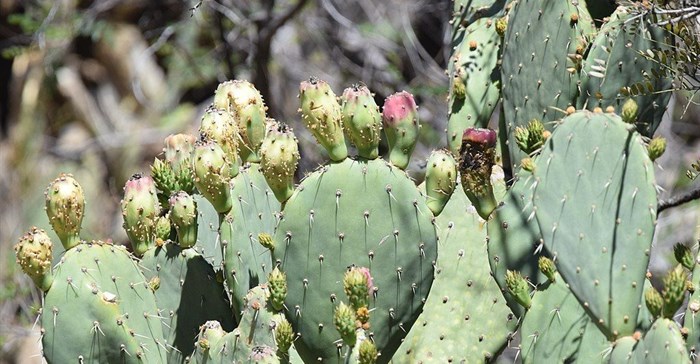
Top stories






More news



As climate change brings erratic rainfall and prolonged droughts, countries should look to the cactus pear, which can grow in desert-like conditions, experts said on Friday at the launch of a book on the plant.
Its fruits and its flat, balloon-shaped pads can be eaten by humans and animals, they said.
The insects that live and feed on the cactus pear provide dye for textiles, foods and cosmetics while its seeds, fruits, and stem have high levels of nutrients, vitamins, minerals and antioxidants, the book said.
Cactus pear plantations can function not only as a water reserve but also absorb carbon dioxide in arid and semi-arid regions, it added.
The cactus is already a well-established ingredient in Latin American cuisine, where it is eaten fresh, cooked, or pickled, however, its use as fodder is less widespread.
The plant is now being cultivated in a handful of countries including Brazil, Ethiopia, South Africa, Jordan, Morocco and India, experts said.
Jose Dubeux Jr, associate professor at the University of Florida, said the cactus's high water content was ideal for animal consumption in dry areas and could help conserve scarce water sources for humans.
They are also easy to grow. "If you take a cactus pad and you throw it like a Frisbee, it will land flat and make roots from whatever it is that touches the soil," said Mounir Louhaichi, principal scientist at the International Center for Agricultural Research in the Dry Areas (ICARDA).
"It can grow anywhere. It doesn't need irrigation because it's made out of water. It makes use of marginal land," he told the Thomson Reuters Foundation on the sidelines of the launch.
"That's why it's a miracle plant."
The book, co-published by the United Nations Food and Agriculture Organization (FAO) and ICARDA, said the rural poor and smallholders were most heavily affected by changes in the climate. "If people are to survive in these ever harsher conditions, their crops need to withstand drought, high temperatures and poor soils," it said, adding that the prickly pear was ideal for such conditions.
Reporting By Thin Lei Win, Editing by Emma Batha
Thomson Reuters Foundation

AllAfrica is a voice of, by and about Africa - aggregating, producing and distributing 2000 news and information items daily from over 130 African news organisations and our own reporters to an African and global public. We operate from Cape Town, Dakar, Lagos, Monrovia, Nairobi and Washington DC.
Go to: http://allafrica.com/